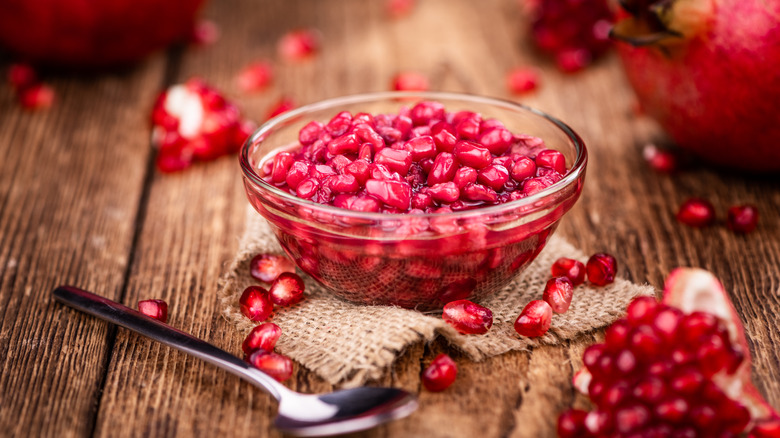Nigella Lawson's Panettone Adds One Ingredient For 'Luck'
Christmas pudding (otherwise called figgy or plum pudding) is one of the most iconic Yuletide desserts. Originating in the British Middle Ages, the pudding has since gone on to feature in Charles Dickens' "A Christmas Carol," as well as the actual Christmas carol, "We Wish You A Merry Christmas," as pointed out by History. It is quite famous indeed, but that doesn't mean it's the only Christmas treat out there. Far from it!
Elsewhere in Medieval Europe, as noted by The New York Times, the Italians created their own wintry delight: panettone. It's a golden sweet bread — domed, pillowy, and full of candied fruits. Like British fruitcake, panettone is traditionally made once a year with splurges on butter, eggs, flour, sugar, and even imported fruits and spices. Over time, chocolate, hazelnut, lemon, and other ingredients have been incorporated into twists on the classic recipe. Wrap it all up in a ribbon, and you've got yourself the perfect gift for Christmas in Italy.
Lately, many bakers have been getting in on the panettone trend. Some honor its authentic roots, and others modernize the recipe. Best-selling cookbook author and food television host Nigella Lawson has created her own "Italian Christmas Pudding Cake" recipe, using panettone as a key component and adding in a special ingredient for luck.
Pomegranate seeds bring good fortune
On "Nigella Kitchen," Lawson is known to demonstrate easy home recipes using everyday ingredients. As the host recently explained on Twitter, her Italian Christmas pudding cake is one of those accessible recipes, requiring no cooking; chefs will only need to stir, chop, and layer things together. The recipe is Italian through and through, incorporating panettone as the base for a layered dessert with crema di mascarpone, which Lawson describes as the creamy element in tiramisu. It also draws on cassata, a ricotta-filled Sicilian Easter cake, per Eater, adding chopped pistachios and crumbled candied chestnuts. Last but not least, Lawson sprinkles pomegranate seeds on top, not only for Yuletide aesthetics, but also for good luck.
Where does such an auspicious idea come from? According to Greek Reporter, pomegranates have been considered lucky since ye olden days. Ancient Greeks would smash the fruit on New Year's day since it symbolized vitality and prosperity, likely due to how plentiful the pomegranates' seeds were. This practice survives the modern day, with Greek Orthodox customs breaking of a pomegranate at the stroke of midnight on New Year's Eve, in order to see how many lucky seeds flood out.
Greece is just an Ionian Sea away from Italy, and Christmas is just a week away from the New Year. So, why not bring the good fortune of pomegranate seeds over to an Italian panettone pudding cake? Lawson's got the right idea!

